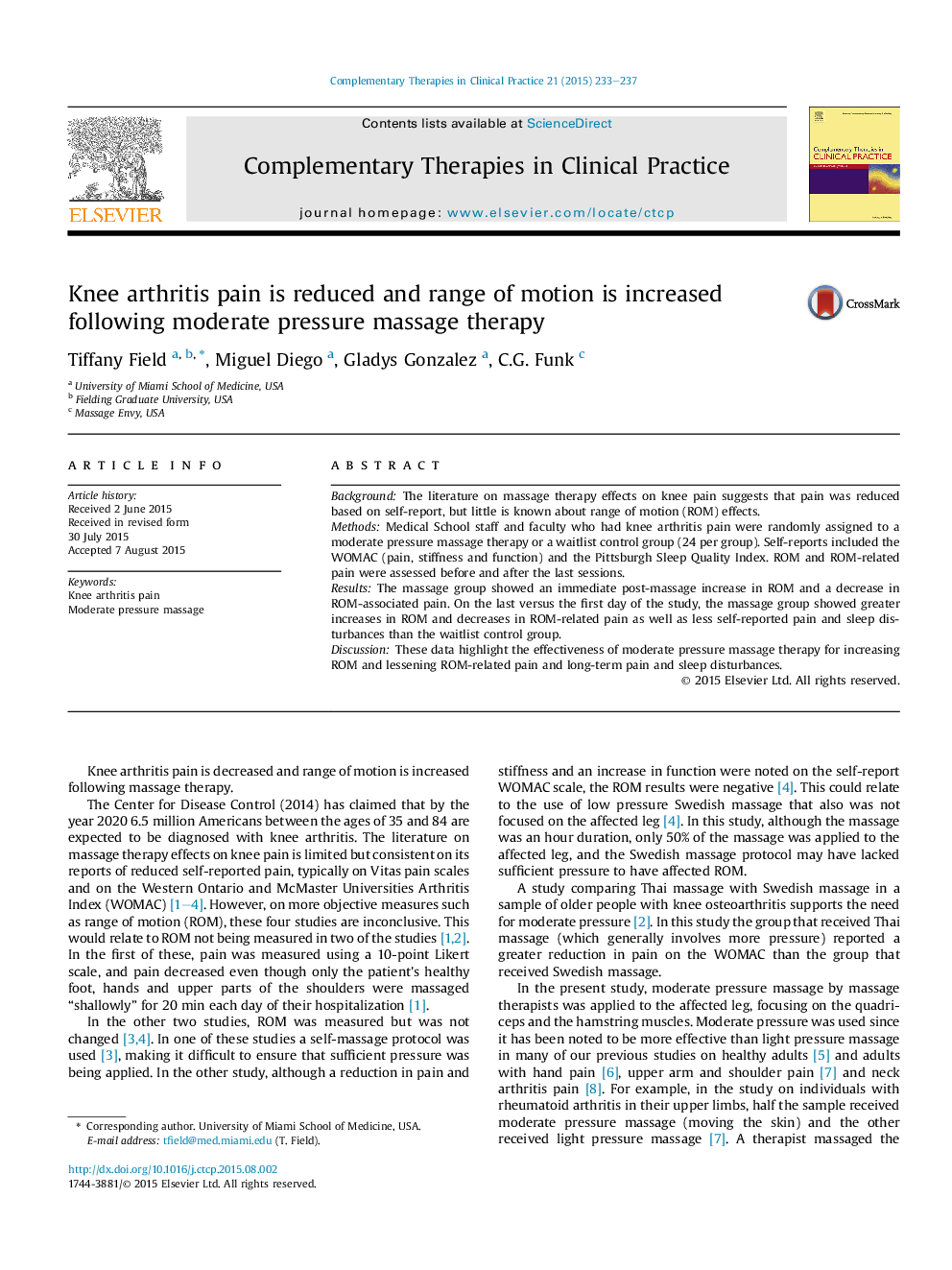| Article ID | Journal | Published Year | Pages | File Type |
|---|---|---|---|---|
| 2628281 | Complementary Therapies in Clinical Practice | 2015 | 5 Pages |
•Knee arthritis pain is reduced and range of motion is increased following moderate pressure massage therapy.•Moderate pressure massage on both the hamstrings and the quadriceps appears to be essential.•Both internal and external range of motion increased and the associated pain decreased.•Goniometer readings of standing and supine flexion increased and walking speed increased and walking pain decreased.•The WOMAC pain, activity and total scores decreased as did the sleep disturbance scores.
BackgroundThe literature on massage therapy effects on knee pain suggests that pain was reduced based on self-report, but little is known about range of motion (ROM) effects.MethodsMedical School staff and faculty who had knee arthritis pain were randomly assigned to a moderate pressure massage therapy or a waitlist control group (24 per group). Self-reports included the WOMAC (pain, stiffness and function) and the Pittsburgh Sleep Quality Index. ROM and ROM-related pain were assessed before and after the last sessions.ResultsThe massage group showed an immediate post-massage increase in ROM and a decrease in ROM-associated pain. On the last versus the first day of the study, the massage group showed greater increases in ROM and decreases in ROM-related pain as well as less self-reported pain and sleep disturbances than the waitlist control group.DiscussionThese data highlight the effectiveness of moderate pressure massage therapy for increasing ROM and lessening ROM-related pain and long-term pain and sleep disturbances.
